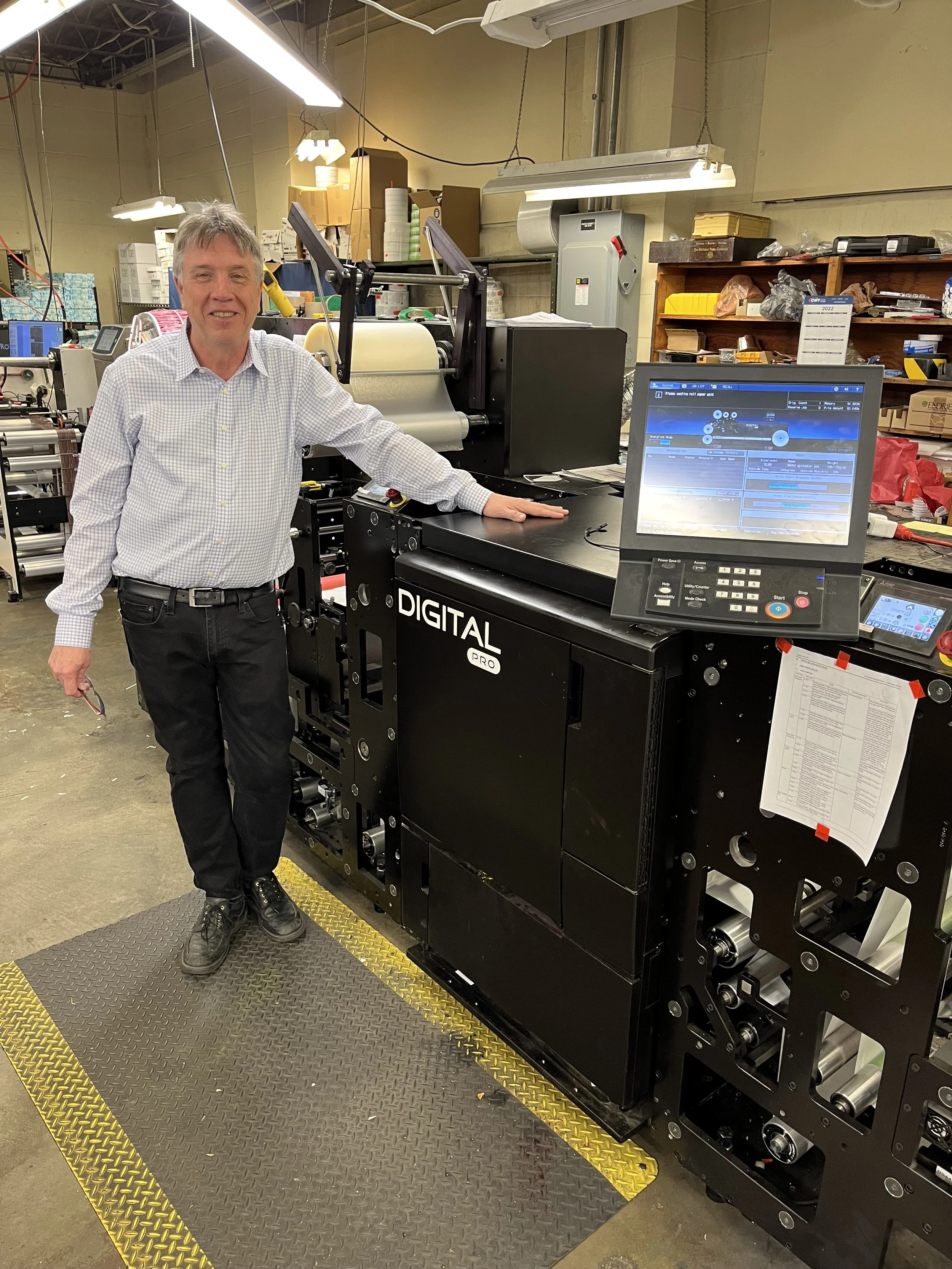Queen City Printing boosts all-round capability- with Mark Andy & Rotoflex
Perhaps it’s no surprise that a company originally founded in 1904 should be one of Ohio’s best all-round suppliers of offset, flexo and digital print products for niche markets, though in truth, it says as much about the dynamic leadership of its President Ron Busch and the late Luigi LaValle III who acquired the business in 1987 and created BLT Corporation doing business as Queen City Printing. Sadly, Luigi died a few years back, but the business continues to thrive today.
Located in Norwood, in the suburbs of Cincinnati, Queen City Printing has built an enviable reputation for being good at everything, which as Ron Busch explains, is what any small company needs to be to survive these days. The company’s tightly packed 10,000 sq/ft production facility houses a range of print and finishing technology that allows it to offer a large portfolio of products, but it’s in the pressure-sensitive narrow web market that the company has seen major growth, and most of its technology is Mark Andy branded.
“We started with a 7” five-color Comco Cadet back in 1990 and haven’t looked back – in fact the Cadet is still running and producing good quality roll-to-roll jobs for the pharmaceutical sector,” he said. In the mid ‘90s, the Company saw a growth in demand for sheeted wet glue labels and installed two digital presses, but it was the move by the chemical industry, which provides much of the Company’s business, towards roll labels, that prompted Busch to investigate what options were available.
“It was Labelexpo in 2016 that we started talking with Mark Andy and ended up installing one of their Digital One flexo/toner hybrids in early 2018. It was unique in offering both types of print and converting/finishing inline for single-pass operation – it was tailor-made for our work,” he explained. Simple to operate and with a small footprint and no ‘click charge’, Digital One pioneered technology for the short run digital labels that were enjoying a growth in demand from, amongst others, artisanal products and local breweries.
In 2019, with the elderly Cadet at full stretch and demand for flexo work showing no signs of slowing, the Company installed a Mark Andy Performance Series P4 press. Its wider 13” web, sixth color and higher running speed significantly extended flexo capacity and has opened new market opportunities for Queen City.
Two years on, it became clear that the Digital One was not providing sufficient capacity to meet the demand for short run digital labels, and the decision was made to replace it with a second series machine, known as the Mark Andy Digital Pro. Essentially a grown-up version of its predecessor, Digital Pro offers a higher running speed, the option of a flexo unit before as well as after the toner engine and a choice of full or semi-rotary die cutting units. Its 13” web width and 77 ft/min performance at 1200dpi resolution makes it a formidable tool. It has a simple and easy to use RIP for handling existing PDFs, requires no clean-room environment and comes complete with an air-cooled LED/UV unit.
“The ability to lay down a flexo white before overprinting CMYK toner on filmic materials has been a real benefit. We use the second flexo unit for security numbering on the reverse for pharma labels and have both types of die station so that we can choose whichever is best for each job,” he explained. “The decision to upgrade was a complete ‘no- brainer’ as far as we are concerned, and while we run mostly self-adhesive stocks on it, it does a brilliant job on the vinyl we use for the industrial market.” With the increasing use of BOPP and especially silver BOPP, the Company has had issues with static electricity build-up, which has been resolved by locating humidifiers strategically around the production area.
One change brought about by the Covid pandemic was the switch by many from paper to PET liners, which run better on all the label presses. “The pandemic added about 20% to our sales because we had both substrate and press time available when others did not – it’s fallen back a little, but the market has changed because of different consumer shopping habits, and we are feeling the benefit.”
With press capacity now well capable of meeting demand, Queen City knew it had to relieve the bottleneck post press, especially with inspection/rewinding, and once again turned to a Mark Andy Group product, in this case Rotoflex and an HSI 330 model. The HSI is an operator-friendly machine with a horizontal table. It’s a well-proven design that offers time and waste savings to increase efficiency.
“It’s given us four times the capacity we had before and the advantage of 100% inspection before and after the rewinding, which is essential for our pharma work. It’s easy to use and offers us the ability to vary tension in the rewound rolls – some customers prefer a tightly wound roll, for example in the industrial sectors, while our pharma customers prefer a more loosely wound roll.”
This is the benefit of the HSI’s eDrive 2.0 system, which by making better use of power results in improved roll characteristics. It offers high roll quality at any speed and with any number of speed changes and is quick to accelerate and decelerate under full control. Although a recent installation, Ron Busch claims it has already made a major contribution to efficiency post-press and completely removed production hold-ups.
Technology aside, Queen City Printing prides itself on customer service. When you are small and serving niche markets you need to work closely with your customers, many of whom are also small and inexperienced – it’s vital to build trust and the best way is through repeat business. We’re happy to tackle jobs that others won’t even quote for – but we have a skilled and experienced staff and machines we can rely on, so the rest is personal relationship and getting the job done on time and on budget.”
The Company is also proud of the detail it records in the production of every job. Traceability has long been a byword in the pharma market, but the principles are equally valid across the board, and Busch says that by closely observing a strict manufacturing procedure there is less pressure on staff and fewer opportunities for error. “I’m not saying we always get everything right, but if there is an issue, we can quickly identify and rectify it – the Rotoflex is a perfect fit for that.” Looking to the future, he sees inkjet as the next logical move but his strategy of careful and extensive research before investment suggests that it won’t be coming any time soon. He sees growth coming organically from existing customers, many of whom started small and are growing fast. Typical run lengths today are 2500 to 100,000 labels but he says he’s happy to do more or less – by planning and grouping, the company can make maximum use of the Digital Pro press and the workforce can keep to its single-shift five-day week operation. “Work/life balance is very important here – and the company’s successful growth rate proves we’ve got it about right!” he concluded.

